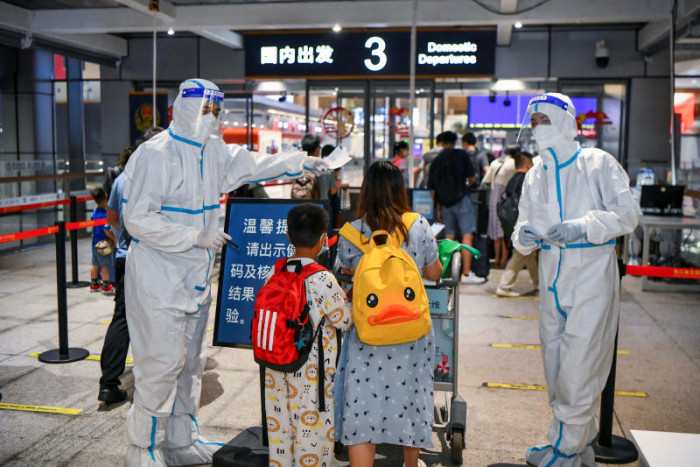
Tourists who were stranded amid the new outbreak of the coronavirus disease arrive at the departure hall of Haikou Meilan International Airport in Haikou, Hainan province, China, on Aug 11, 2022. (Reuters photo)
China has introduced a new health declaration form for those entering or leaving the country, but the authorities have stressed that the country’s strict border controls will remain in place.
The country also remains committed to its zero-Covid policy even as the rest of the world finds ways to live with the virus, but has signalled it wants to make travel easier for some groups.
Here is how things stand at present.
Is it easier to enter China than before?
The customs administration said the new rules were designed to make the process more efficient but do not signal any relaxation in the country’s prevention and control requirements.
However, there has been an easing of restrictions on overseas students. Those holding valid residence permits have been allowed to return to the country starting from Wednesday and embassies have started processing applications for student visas again.
Two months ago, China also started allowing foreign nationals with permanent residence or who are visiting immediate family to make short visits.
The process of applying for work visas has also been made easier by scrapping a requirement to obtain a hard-to-obtain letter of invitation.
Authorities have also signalled they are keen to do more to help business travellers enter the country and, according to the Global Times newspaper, chartered business flights from India, Pakistan and South Korea have entered in the past two months.
However, overseas tourists are still being kept out.
How has the process changed?
There has been no real change. Travellers still need to take PCR tests before and after entering China, a customs spokesman told a press conference on Friday.
They also still have to provide their vaccine status, if asked by the local Chinese embassy, to apply for a health code, a requirement for using public transport and entering public places.
Essentially the new rules streamline the process by reducing the amount of form-filling needed to enter the country and travellers do not have to provide all this information when filling out a customs form.
They can also provide consent to take PCR tests online and no longer have to give their exact address on the customs form.
What is the current Covid situation in China?
Sporadic outbreaks are happening across the country, with lockdowns and curbs on movement being introduced after just a handful of cases.
Recently some of the country’s most popular tourist destinations, including the island of Hainan and parts of Xinjiang and Tibet, were locked down – stranding tens of thousands of travellers.
Mass tests are also still a regular feature of life. On Wednesday, millions of residents in the southwestern megacity of Chongqing had to queue up in temperatures of over 40 degrees Celsius to be tested.
In the past week, nearly 10,000 positive cases have been recorded, but no deaths.
Is China ready to move on from zero-Covid?
The continued use of lockdowns and mass tests suggests not. Health officials have also warned that the country’s health system – which has stark divisions in service provision between rich and poor areas – risks being overwhelmed if the policy is abandoned.
Although more than 89% of the population has received two doses of vaccine, less than 60% of the population, and only 66% of those aged over 60, had received a booster shot by early August.





